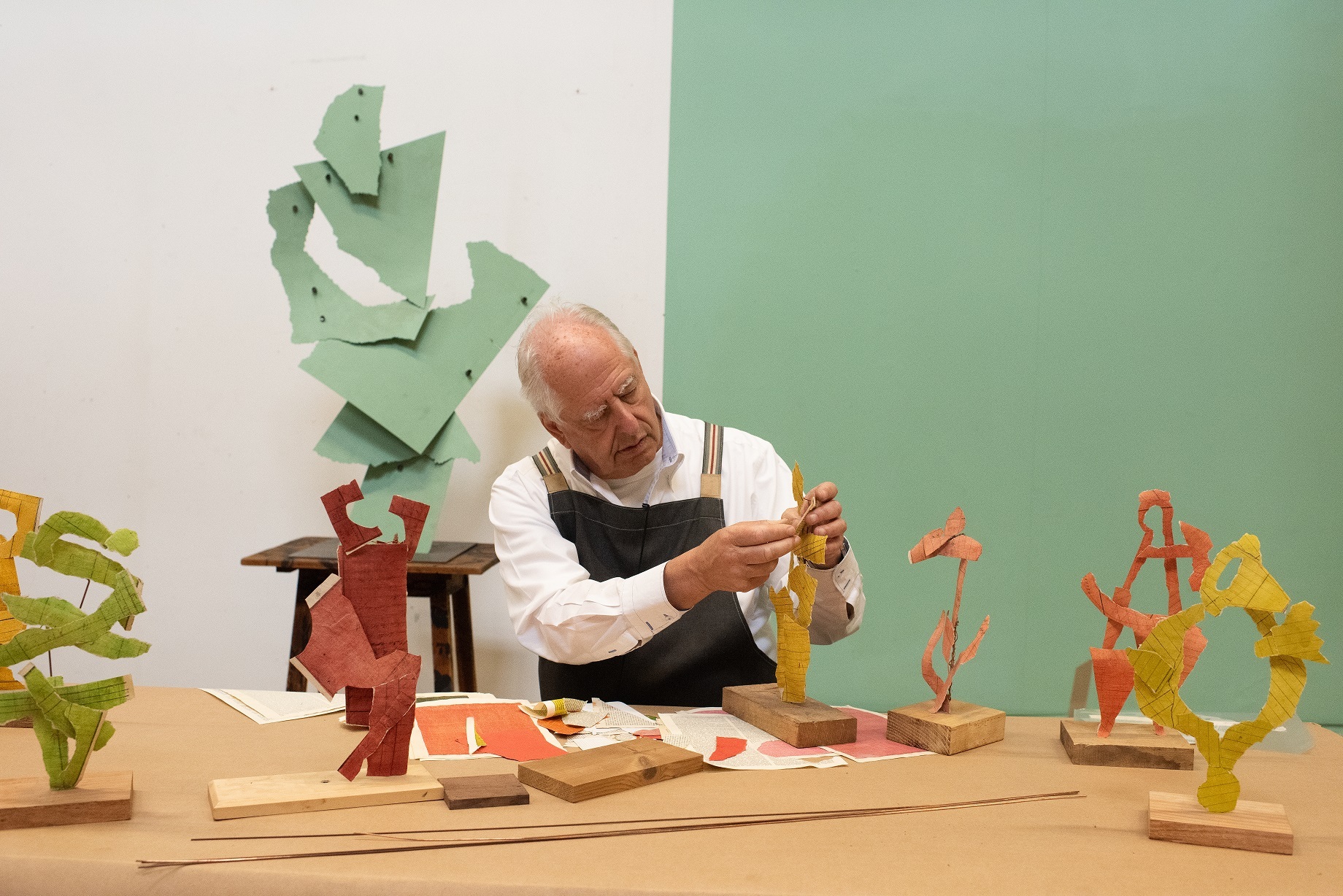Insights

Bringing the best of contemporary art to Yorkshire Sculpture Park
Interview with Clare Lilley, Director of Yorkshire Sculpture Park, on William Kentridge and the value of making sculpture accessible to all
Picture: William Kentridge in his studio with Laocoön, Johannesburg, 2021. Photo Stella Olivier, © William Kentridge
What is the origin of the Yorkshire Sculpture Park (YSP)?
It was founded in 1977 by Sir Peter Murray. Before that the land had been a private estate for several families for one thousand years. Just after WW2, the house and the land were sold to the local education authority, which created Bretton Hall College, a progressive college for teacher training and the arts.
In 1977, when Peter was teaching at Bretton on a postgraduate course, open air sculpture was enjoying a bit of a moment in Britain. The Henry Moore Foundation and Grizedale Forest were both established that year. There was something in the air – maybe the Queen’s Silver Jubilee!
Himself an artist, Peter realised that placing sculpture in a landscape brought a new story to both the space and the artwork, making them accessible to people who wouldn't necessarily go to a gallery or museum. This inspired him to gradually make the land at Bretton Hall into a sculpture park and open to all. Today, now at 500 acres, we curate exhibitions both outdoors and indoors and across three beautiful galleries.
Why is it important to make art accessible to all?
I believe firmly, that art profoundly enhances people’s quality of life. Over the years, I’ve seen people—sometimes sceptical at first—become curious, engaged, moved. There’s often a communion between a person and a piece of art, much like the connection people feel with nature. Our aim is to contribute to the quality of life and economy of the region, and to the nation’s cultural ecosystem – to be a force for good.
Can you tell us about YSP’s work in the community?
Our outreach initiatives support many people, some on the margins of society, and are a very important aspect of our vision. The park is a sanctuary for many. We work with recovering addicts, asylum seekers, refugees, children with limb differences, bereaved young people and many more. We’ve worked with women who’ve come out of enforced sex work from North Africa and Eastern Europe—people who don’t always share a common language, but who can connect through our learning and engagement programmes, through making art. The park holds people. It’s safe – for families and for those facing profound challenges.
In our Formal Learning programmes, we work with over 30,000 young people each year. All our work is delivered by practising artists and is very hands-on. That means the experience of coming to make sculpture or to draw or walk and talk at YSP is unlike anything else young people are likely to experience. It’s incredibly enjoyable, builds teamwork, gets people working outdoors, and helps build confidence and aspiration. They love it, and so do their teachers and carers.
Why put art outside?
Sculpture changes how people move through a space. We have a huge area of land that used to be simply a country park. When we first placed a Henry Moore sculpture there, people stopped walking in straight lines and started exploring – going uphill, across landscapes, taking in the views in relation to the sculptures. It becomes a visceral, emotional connection between the artwork, the land, and the people. Putting art outside makes these multi-dimensional interesting experiences that feed the body and soul.

How significant is it to be exhibiting William Kentridge’s art at YSP this summer?
At YSP we have always aimed to bring the best of contemporary art to Yorkshire and to present it in a way that enables wide receptiveness. William Kentridge is one of the most important artists working today, so having his exhibition here is incredibly exciting for us and has been a long time in the making. He has made six new works – the 5-metre-high Paper Procession – especially for us, which is particularly thrilling.
Known as a filmmaker and draughtsman, Kentridge hadn’t considered himself a sculptor until relatively recently. I first invited him here in 2015, and now – ten years later – we’re finally presenting a major exhibition. It’s a huge undertaking: physically and financially. The sculptures are coming from South Africa, Switzerland, Italy, and the UK and some are vast objects.
How would you characterise his work?
As curators at YSP, we’re drawn to artists with strong humanitarian concerns. Kentridge is known for his light-touch, animated drawings that are constantly erased and redrawn. Informed by the South African experience, his work is all about change, impermanence, and what he calls provisionality. Both his parents were prominent anti-apartheid lawyers. While politically and socially complex, he manages to make work that is highly compelling, sometimes humorous, and always thought-provoking.
Clare Lilley will be in conversation with William Kentridge at a private Stonehage Fleming dinner to celebrate the Yorkshire Sculpture Park exhibition, William Kentridge: The Pull of Gravity, which opens on 28th June 2025.